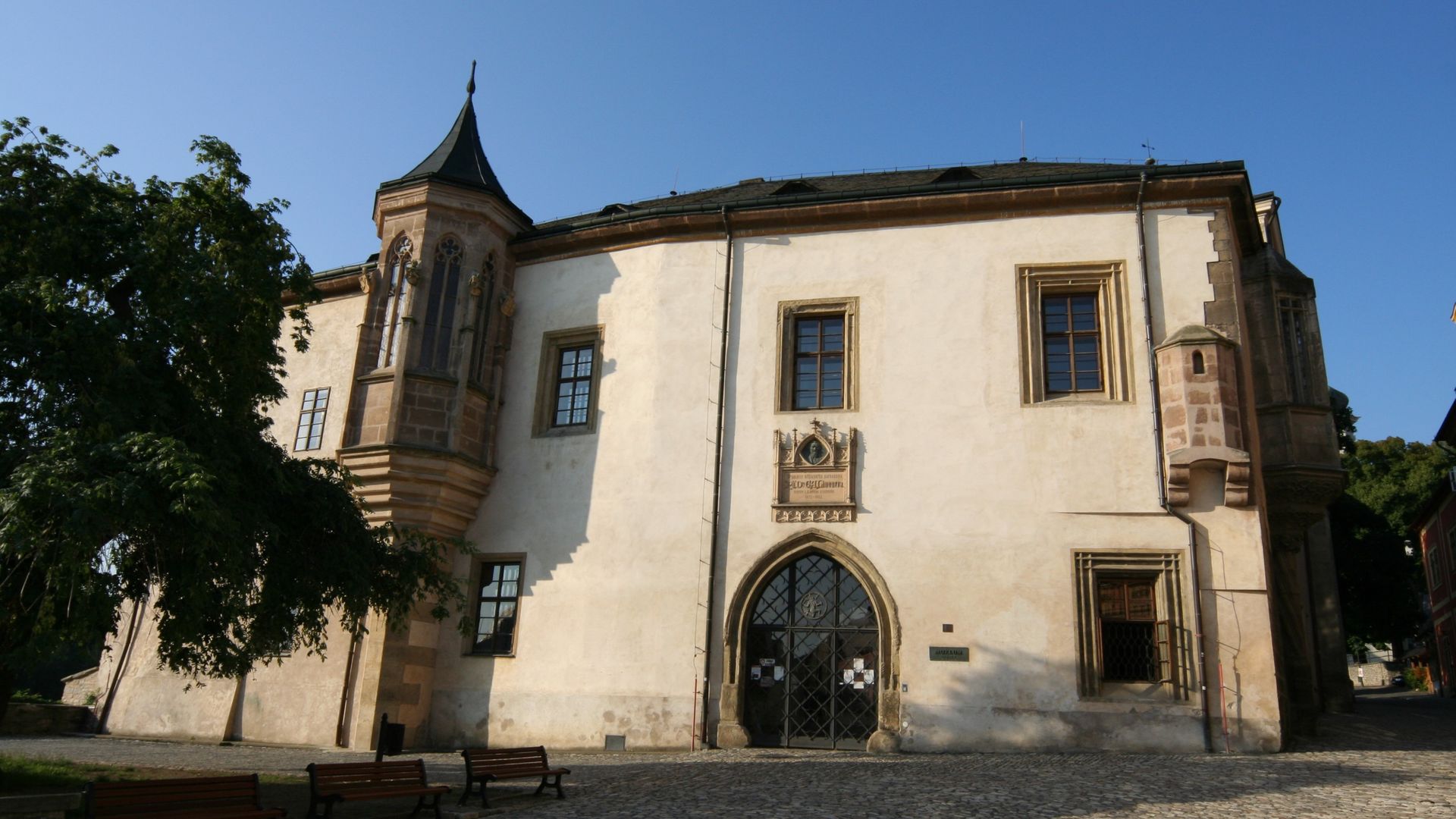
Hradek – Czech Museum of Silver
The Czech Museum of Silver is the successor of the Vocel Archaeological Society, founded in 1877. It is housed in the Gothic building of the historic Hradek (Little Castle) and it was opened in 1996. Today, the museum is one of the oldest and, with a collection of approximately 185,000 items, also among the richest museums in the Czech Republic. It has a great archaeological and numismatic funds, with its art and geology funds also worth mentioning. The exhibits from the special funds of mining technology are among the oldest in Europe.
Routes at the Czech Museum of Silver:
The Town of the Silver
Visitors get acquainted with the development of Kutna Hora from the beginning into the shape of the second most important town of the kingdom. The ground floor is dedicated to the geology of Kutna Hora ore district and to archaeological relics documenting prehistoric and early medieval settlement of the region before the foundation of Kutna Hora. Another hall is dedicated to the rapid beginnings of the town when the silver was discovered here.
The exposition on the first floor introduces Kutna Hora as an imposing royal mining town. It presents development of Hradek, lifestyle of entrepreneur’s “silver” nobility and the role of Kutna Hora in the Czech state. One hall is dedicated to an exhaustive overview of the Czech mintage struck in Kutna Hora.
The Way of the Silver
The tour introduces the whole process of medieval mining, processing of raw silver and the technology of coinage. It includes a replica of a mining operation with technical equipment, the original large horse-powered mining machine, the so-called trejv, an authentic medieval mine and, since 2017, the tour has been enriched by a “mining settlement”. This offers replicas of log buildings and shelters (the so-called miners’ caverns), ore washing troughs, a replica of a hearth furnace, and a silver ore crushing plant.
Equipped with a helmet with a torch and a miner’s coat with a hood, the so-called perkyle, you will walk through about 250 m long part of the original medieval mine. It is possible to skip the passage through the mine and take only the exposition on the surface.
For more information about the Central Bohemia Region, from which this museum comes, click here and here.
This post was created by volunteers. You may help and support by clicking here.